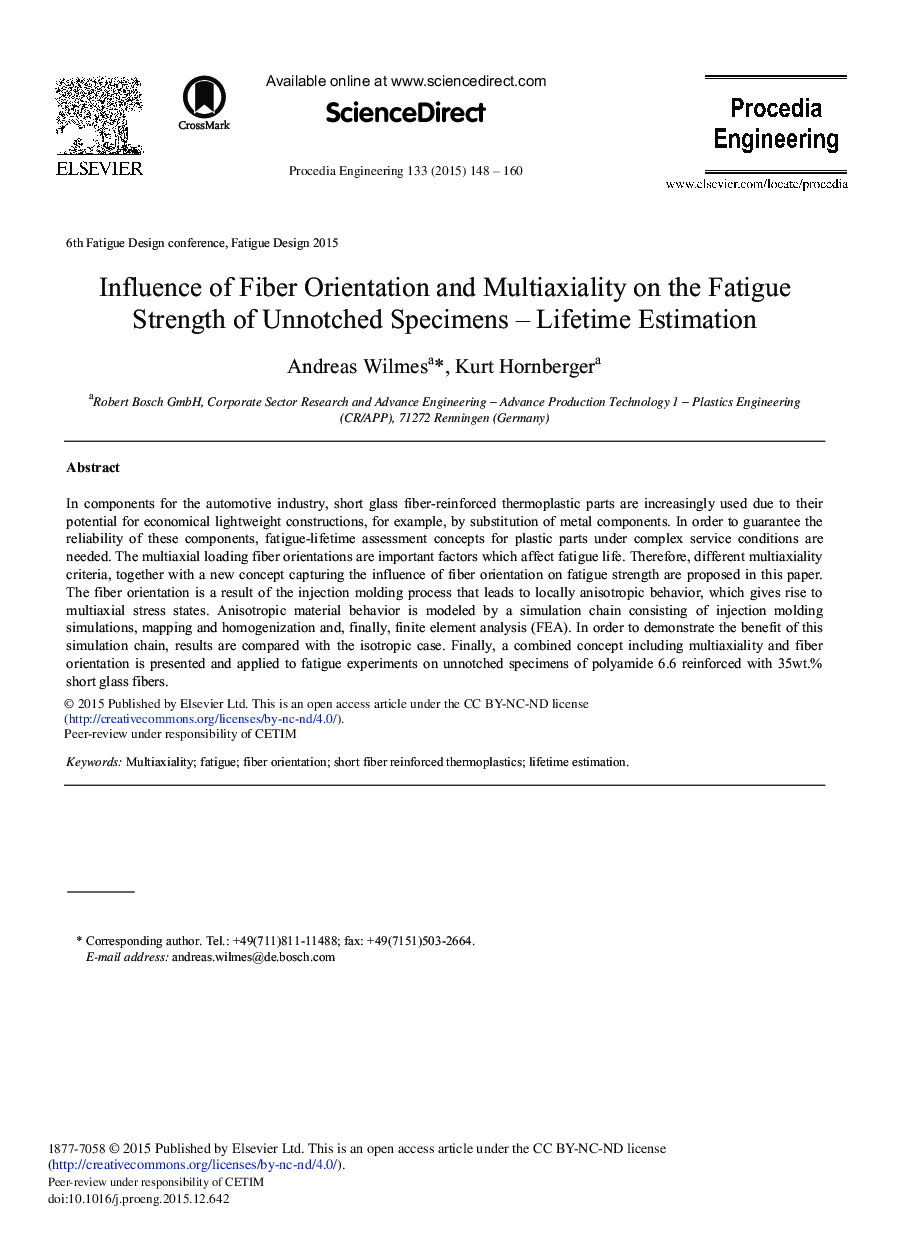| Article ID | Journal | Published Year | Pages | File Type |
|---|---|---|---|---|
| 853928 | Procedia Engineering | 2015 | 13 Pages |
In components for the automotive industry, short glass fiber-reinforced thermoplastic parts are increasingly used due to their potential for economical lightweight constructions, for example, by substitution of metal components. In order to guarantee the reliability of these components, fatigue-lifetime assessment concepts for plastic parts under complex service conditions are needed. The multiaxial loading fiber orientations are important factors which affect fatigue life. Therefore, different multiaxiality criteria, together with a new concept capturing the influence of fiber orientation on fatigue strength are proposed in this paper. The fiber orientation is a result of the injection molding process that leads to locally anisotropic behavior, which gives rise to multiaxial stress states. Anisotropic material behavior is modeled by a simulation chain consisting of injection molding simulations, mapping and homogenization and, finally, finite element analysis (FEA). In order to demonstrate the benefit of this simulation chain, results are compared with the isotropic case. Finally, a combined concept including multiaxiality and fiber orientation is presented and applied to fatigue experiments on unnotched specimens of polyamide 6.6 reinforced with 35 wt.% short glass fibers.
